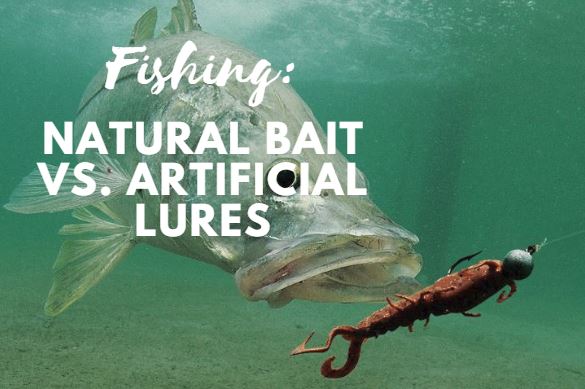
Many species of fish are much less responsive to lures than they are to bait. Lure fishing generally demands better-quality tackle and a higher degree of skill than bait fishing. The following article was published by DiscoverBoating.com.
Natural Fishing Bait, The Most Effective Choice
One of the most efficient and productive methods of sport angling is to use natural baits, or live bait while at your favorite lake or pond. Natural baits are effective because of their familiar texture, odor, and color, and require a relatively simple presentation. They are generally most effective when acquired locally, outweighing any hassles involved in obtaining them.
The common earthworm is a universal bait; almost every fresh water species will hungrily gobble an earthworm. Grubs and maggots are excellent bait along with grasshoppers, crickets, bees, aquatic snails, small frogs, tadpoles, crayfish, and even ants. Many anglers believe that roe—fish eggs–is superior to any other bait. Some of the more popular natural baits include:
- Worms: good bait for nearly all freshwater fish and you can find all you need in a few shovels of dirt from a shaded, damp area.
- Minnows: store in a bucket with plenty of cool water to keep them alive. Never crowd them.
- Crickets, grasshoppers, beetles: many varieties all make good baits, particularly later in the summer and autumn.
- Leeches: excellent bait for many fish when hooked through the sucker in the tail.
The Challenge of Using Artificial Baits and Lures
Some anglers prefer to use artificial baits or lures, made to imitate prey or prey characteristics such as color, flash, or shape, that fish find attractive. A quick look down the aisle at your local tackle shop will tell you that artificial baits come in a bewildering array of styles, shapes, strategies, and colors, ranging from massive, shiny silver spoon-like devices trolled for big lake fish to wispy dry flies, tiny bundles of feathers and fur delicately cast to flighty trout.
Seasoned anglers usually carry more than one kind of lure and try to cover all three zones of the water column: surface, subsurface and bottom. Specific lures for each zone and species enables you to get attractive baits to the fish regardless where it is holding. There are hundreds of different types of artificial lures, but most fall into one of seven basic categories: crank baits, plugs, poppers, spoons, jigs, spinners, and flies.
- Crankbaits look like small fish and are classified as surface, medium diver, and deep diver. They are cast and retrieved by reeling—cranking–the line back in.
- Plugs mimic small fish. Some float, some dive, and some shimmy, shake, gurgle, and splash to imitate prey.
- Poppers imitate bugs floating on the surface of the water and, when jerked, make a sound that attracts certain kinds of fish.
- Spoons look something like teaspoon and imitate a speedy minnow flashing and darting.
- Spinners have small blades or propellers that spin and flash when reeled, attracting fish by the motion and vibrations sent through the water.
- A jig is simply a small hook with a lead ball near the eye of the hook, often decorated with feathers, artificial eyes, rubber legs, and tinsel.
- Flies are artificial imitations of the aquatic and terrestrial insects and other prey creatures found in and near trout streams. Fly fishing is different than spin casting, using different equipment and techniques. Flies weigh only a few grams and are constructed—tied–from a range feathers, fur, thread, tinsel, and even foam and other space-age materials. Because they weigh next to nothing, casting a fly is more complex than other artificial lures or bait.
Go to original article here.
Re-posted by Scott Freerksen “The Lake Guy”
